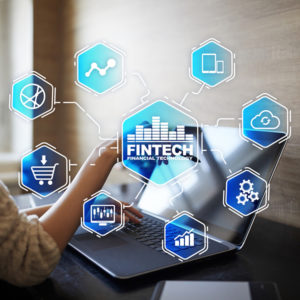The United Nations General Assembly adopted the Universal Declaration of Human Rights in 1948, which proclaims the inalienable rights which everyone is entitled to as a human being. This visionary declaration is the most translated document in the world, available in more than 500 languages.
Around the globe, many have embarked on the mission to meet the goals set out in that document, however ambitious. As climate change, disease, and other forces threaten the lives and livelihoods of the most vulnerable populations—equitable access to financial services should be considered an inalienable human right.
Growing up in Detroit, I witnessed people struggle with the simple task of cashing their weekly paycheck because they didn’t have a bank account. Anxious to access their hard-earned money, the quickest and easiest way was to turn to a corner store that was happy to cash their check, but charged high fees which they couldn’t afford – yet had to pay because they needed to put food on the table.
In Detroit and so many other cities, it’s also not uncommon for people building their American dream to send money to family members in their home countries through remittances, paying usurious transfer fees to private and opaque networks of financial institutions that chip away at the money they earned, saved, and wanted to share.
It doesn’t have to be this way.
In this digital age, the path to financial inclusion requires technological innovation, and the opportunities for a more fully inclusive global economy are more plentiful than ever. Producers and consumers are able to connect in more ways than ever before, but the same payment models that have excluded so many in the past still control access to the financial system. The check-cashing place may be accessible through a phone, but it is no less opaque, monopolist, or predatory.
Outdated underlying technology exacerbates the financial exclusion of the world’s unbanked people, even as innovative services emerge in many countries to fill the gap. 1.7 billion people still lack access to the banking system and digital payments, despite most owning a mobile phone, according to the World Bank’s Global Findex.
Traditional payment networks operate independently from each other, and while sending money through a digital transaction can feel like a giant leap from going to a bank branch, it is still only relatively easy if the sender and recipient have accounts on the same network. Payments between different networks are slow and expensive, preserving many of the costs and inefficiencies that have long been a barrier to financial inclusion. Access to digital payments has proliferated, but as long as networks choose to remain closed it’s a costly disconnect, hitting the very people who can least afford it the hardest.
There is another way—a direction that will help to establish financial inclusion as a widely accepted norm. Our organization, the Interledger Foundation, envisions a world in which everyone enjoys the basic human right of financial inclusion by being able to utilize open payment standards and technologies that seamlessly connect the global society. Monetary interaction should be as easy as information exchange. Just as we have eliminated barriers to communicating and sharing information, everyone should be able to transfer the money they earn without barriers or friction.
Using an open payments network in which anyone can seamlessly earn, buy, sell, trade and share will build equitable pathways to financial access and participation. It will ensure that the unbanked and underbanked have an opportunity to break generational cycles of poverty and create a path to the middle class. It also can provide everyone with a safer, transparent, and more convenient banking option. This is not a utopian concept. It is a complex but achievable goal — one that necessitates the commitment and collaboration between technology leaders, central banks worldwide, governments, policymakers, creators, and civil society.
The centrality of digital rights has already been recognized by the United Nations, with the Secretary General’s Roadmap on Digital Cooperation adopted on June 11, 2020. Its tenets include “ensuring digital inclusion for all, including the most vulnerable” as well as “achieving universal connectivity by 2030.”
It is a lofty goal, but so was the creation of the United Nations and its human rights declaration. And so was developing the internet itself.

